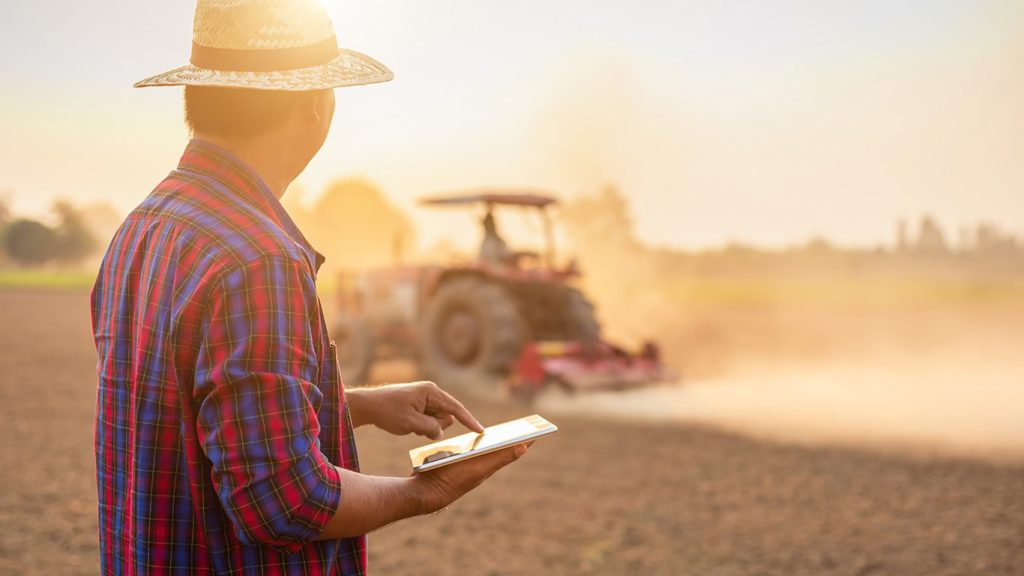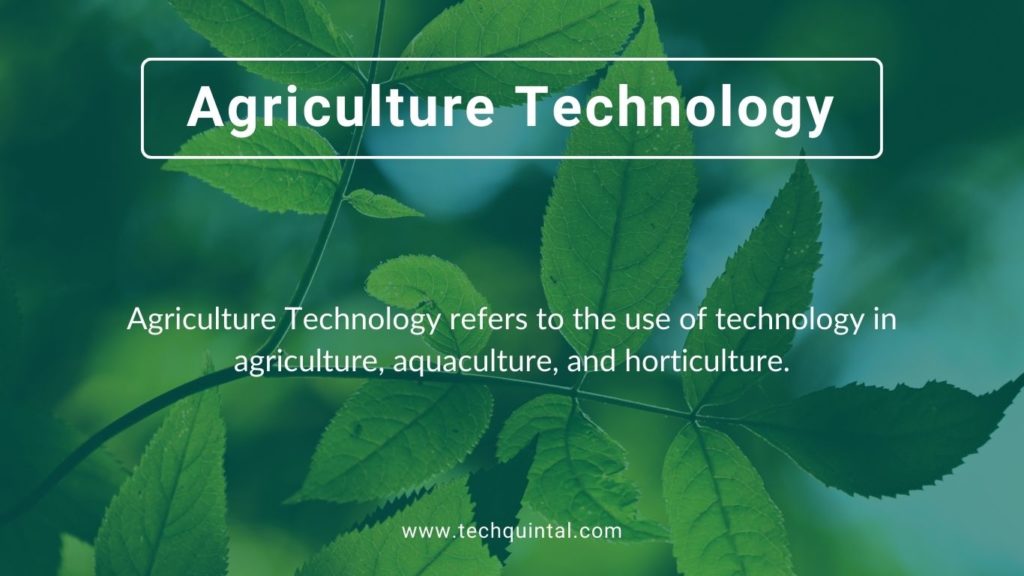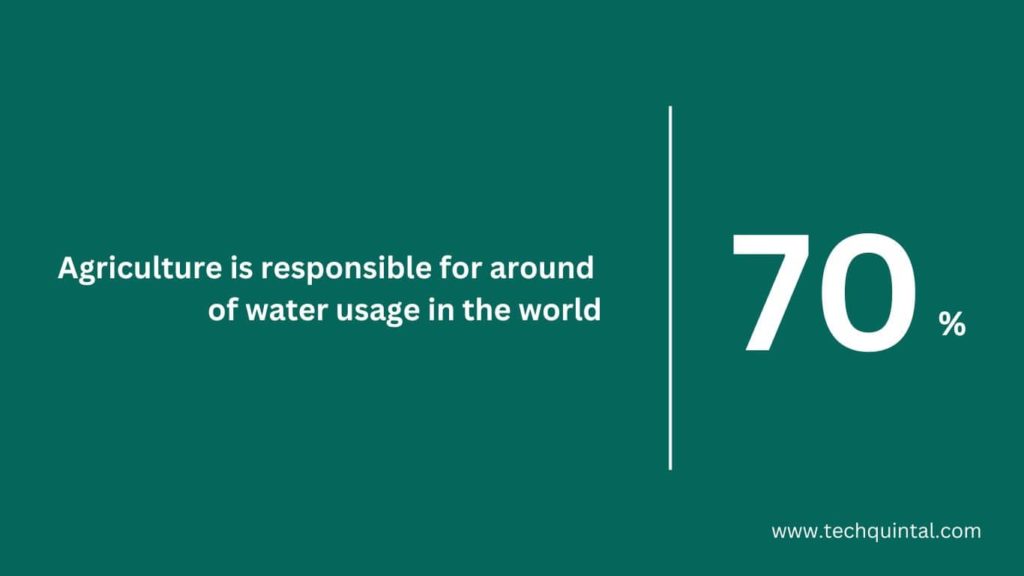
The advancements in agricultural technology are among the key factors for our survival as a species. According to an Agriculture 4.0 – The Future Of Farming Technology 2018 report, 8% of the world’s population (estimated 650 million people) will stay undernourished by 2030. Moreover, the 2018 global GDP of agriculture was between 3% and 4%, which is a drop from a steady 9%-10% in recent decades. The final indicator that we need faster, more efficient technological improvements is the sheer demand.
The same report estimates we must produce 70% more food by 2050. So, it is essential that we integrate technology into agriculture. With that said, let’s take a deeper look into agriculture technology.
What is agriculture technology?

Agriculture technology or agrotechnology refers to the use of technology in agriculture, aquaculture, and horticulture.
Moreover, it’s directly affected by technological developments in agronomy, agricultural science, and agricultural engineering. And, although we, as mankind, went through 4 agricultural revolutions between approximately 10,000 BC and the 19th century, none made such as large impact as the Third Agricultural Revolution or the Green Revolution (the 1950s and later).
Recent employment rates
To emphasize a lot of what we’ll talk about in a second, we must mention this fact. In 1870, close to 50% of the employed population of the United States worked in agriculture. However, by 2017, the number dropped to 2%, almost solely due to the application of modern technology. In contrast, WorldBank.org research shows that 65% of poor working adults earned livelihood via agriculture globally in 2016.
Examples of agriculture technology
While talking about agricultural technology, we cannot avoid things that represent it. The following are some examples of agricultural technology:
1. Satellite imagery
The technical limitations of satellite imagery from the early 1970s, resolution, and frequency, don’t exist anymore. We now have access to real-time data and large area coverage, which means we can seamlessly integrate satellite photography data into other technologies. These include robotics, remote sensing, machine learning, the Internet of Things (IoT), sensors, weather prediction, and more.
As such, we can provide data analytics for various purposes, from small-scale farmers to crop insurance personnel, corporations, and government agencies. The image can also be modified to include spatial, temporal, and spectral range, or to build composite maps.
2. Vertical and urban farming
Vertical farming is sustainable and requires less space since layers can be stacked vertically, and is thus often combined with urban farming. Moreover, it utilizes optimized soil, aeroponic, and hydroponic methods for growing. This allows for superb results in imperfect or what would be inadequate environments.
Additionally, crops are not only shielded from seasonal changes and extreme weather, but often micro-managed via dedicated climate control and energy-efficient ultraviolet LED lighting. Vertical farming, compared to a regular one, uses between 70% and 95% less water, fewer types and quantities of fertilizers and supplements, and no pesticides.
Some crops show a productivity increase of between 350 and 390 times compared to regular growing at the same acreage.
3. Aircraft and drone technology
We’ve used agricultural aircraft since the 1920s to disperse fertilizers or pesticides. At a later date, hydroseeding, a technique of dispersing seeds and mulch, gained popularity. In all 3 cases, they perform aerial application, e.g., crop dusting, over large areas in a short time.
In contrast, drones have better precision, a cheaper cost of maintenance, and provide cheaper and easier operation. Research also shows they’re 5 times faster at aerial spraying than traditional machinery. Also, they’re ideal for analyzing fields and soil, generating 3D maps, and identifying dry spots and potential improvements.
Furthermore, drones can continuously monitor crop health and growth process, create time-series animations, notice changes in plants, and raise alarm if the disease appears. Finally, research suggests the use of drones shrinks the cost by 80-85% compared to
4. Genetic modification
This branch of agriculture is often frowned upon. However, we have selective breeding to thank for many well-known foods. Some of those include banana, drought-resistant wheat, corn, soybeans, cauliflower, broccoli, cabbage, and kale. Well, genome editing not only speeds up the process, but also improves its outcome.
At its forefront is Clustered, regularly interspaced, short palindromic repeat (CRISPR) technology that improves selectivity when genome editing, and nearly eliminates the elements of chance. It can improve yield, increase resistance to negative conditions, boost the vitamin, nutrient, and mineral content, and improve taste and longevity.
5. RFID chips
Animal identification via RFID tags is among the oldest purposes for microchips. Since then, its purpose has expanded to tracking cattle’s location, health status, vaccination dates, nutrition needs, pregnancy, daily milk production, medical history, and more. As for crops, RFID microchips help reduce the number of unauthorized shipments, counterfeit seeds/crops, and can track their health, origin, volume, quality, etc.
Embracing agriculture technology is not just about increasing productivity and efficiency, it’s about creating a sustainable future where farming can coexist harmoniously with nature.
Tech Quintal
Applications of agriculture technology
Here are some of the practical uses for agricultural technology:
1. Reduce food scarcity and misuse
Did you know 1/3 of the globally produced food and roughly 1/2 of the world’s fruit is lost or wasted? Simultaneously, close to 690 million people (8.9% of the world’s population) were hungry in 2020. Even worse, that number was lower by 60 million in 2015. An additional danger stems from the risks related to poor food diet and hunger, which are globally the leading causes of death. Also, by WorldBank.org estimations, 3+ billion people couldn’t afford a healthy diet.
2. Smart farming
We now start to refer to data aggregation, analytics, and predictions as “smart farming”. Farmers can supply their own data and receive data collected on a city, state, or country level. This allows for the application of what we call “precision agriculture”. It helps farmers cut costs, reduce risks, increase crop yields, and avoid droughts and adverse weather effects.
Simultaneously, it aids them in optimizing processes for their specific farm: soil mapping and management, disease prevention/treatment, tilling, planting, fertilizing, irrigation systems, seed distribution, etc. Farmers can also track their harvests, get crop maturity estimates, receive updates related to agricultural laws and trends, and check supply and market prices for their products.
Finally, private and government agencies began introducing AI-assisted chatbots to help farmers with questions, requests, funding, and more.
3. Saving the environment
We analyzed how technology can help save the environment. To remind you, agriculture, land use, and forestry produce about 25% of greenhouse emissions while agriculture alone is responsible for roughly 70% of water use.

Additionally, livestock farming accounts for about 14.5% of the greenhouse emissions produced by humans. For those reasons, increasing crop and livestock farming efficiency is pivotal for future progress. Simultaneously, it can neutralize or drastically reduce climate change effects.
Evolution of Agriculture Technology
The history of agriculture and its evolution is also a reflection of the technology surrounding it. Over the ages, we have witnessed several agricultural revolutions, all based on groundbreaking technology, but nothing comes close to the impact the Industrial Revolution had on the agriculture industry as a whole.
From there, things have only progressed much further until now. And today, we are at yet another precipice of a technological revolution that will change agriculture for the better.
Starting from the industrial revolutions that introduced machinery to farming, we come to the 19th century, which laid the foundation for modern weather forecasting and how it impacted agriculture. Then, venturing further, we arrive at the 20th century, which brought with it the miracle of synthetic fertilizers and pesticides. And finally, we welcome the 21st century and the information age. Today, we have robots, AI, drones, sensors, and satellites to help with agriculture.
The evolution of agricultural technology and its understanding can help us in the future. But for that, we also have to understand the history of agriculture itself, which is highlighted in the following video:
Benefits of Agricultural Technology
Do you know that almost 80% of agricultural production is due to machines? And that there are almost 90% of the farmers who have accepted that the internet is crucial to their jobs. It is apparent that technology is beneficial to agriculture. Thus, here are a few benefits associated with agricultural technology:
- An increase in productivity due to technologies such as precise agriculture.
- Reduction in resources used, such as water, pesticides, and fertilizers.
- Which leads to a much lesser impact on natural ecosystems and resources.
- It enhances the work environment by providing better facilities.
- It also helps with the final pricing of the products.
- The crops are also more resilient.
Technology has certainly proven itself a boon for agriculture. And it still has a lot to offer. Watch the following video to understand how AI can positively impact agriculture.
We have included a table that details different agricultural technologies and their impact.
| Technology | Impact on Agriculture |
|---|---|
| Machinery and equipment | Can enhance productivity while reducing human labor. |
| Precision Agriculture | Increases farming efficiency |
| GPS | Helps with resource management while ensuring precise field mapping. |
| Data analysis and Sensors | Allows us to make data-backed decisions and |
| Biotechnology | Resilient crops that can survive harsh conditions |
| Robots and Drones | Reduce labor and automate tasks like harvesting and monitoring |
What are the challenges faced by agricultural technology?
Despite being beneficial, technology is not readily implemented in agriculture. And even when it does, it faces many challenges. Some of these challenges faced by agricultural technology are explained below:
- Lack of the proper infrastructure to actually assimilate technology in agriculture.
- Many farmers don’t even have any access to capital or credit, and since the barrier to entry is pretty expensive, they aren’t able to implement it.
- The unavailability of water is also a hurdle.
- Even when a farmer can assimilate technology, he isn’t guaranteed enough returns, thus rendering the venture a net loss.
- Soil erosion is also a factor that affects agricultural technology implementation.
- Without proper agricultural marketing, the effects can be somewhat lacking.
- Another issue is the quality of seeds and their availability.
Innovation and the future of agricultural technology
This brings us to what the future holds for agricultural technology and the various innovations surrounding it. Experts believe AI and connectivity are the next best thing for the industry as a whole, as they estimate that the industry can generate an additional $500 billion in production by simply implementing an information network. Having said that, here are the latest innovations in agricultural technology:
- Farm automation: Allowing an increased level of automation will leave more time for other activities.
- Blockchain: It can be used to track plant information, assuring the authenticity of its origins, and helping with quality assurance and regulations.
- IoT devices: It can help with automated solutions such as irrigation systems and monitoring.
The future of agricultural technology is bright. And with the upcoming technological advancements, it will only continue to be so. In fact, you can watch the following video to understand how drones are set to change the way we farm: